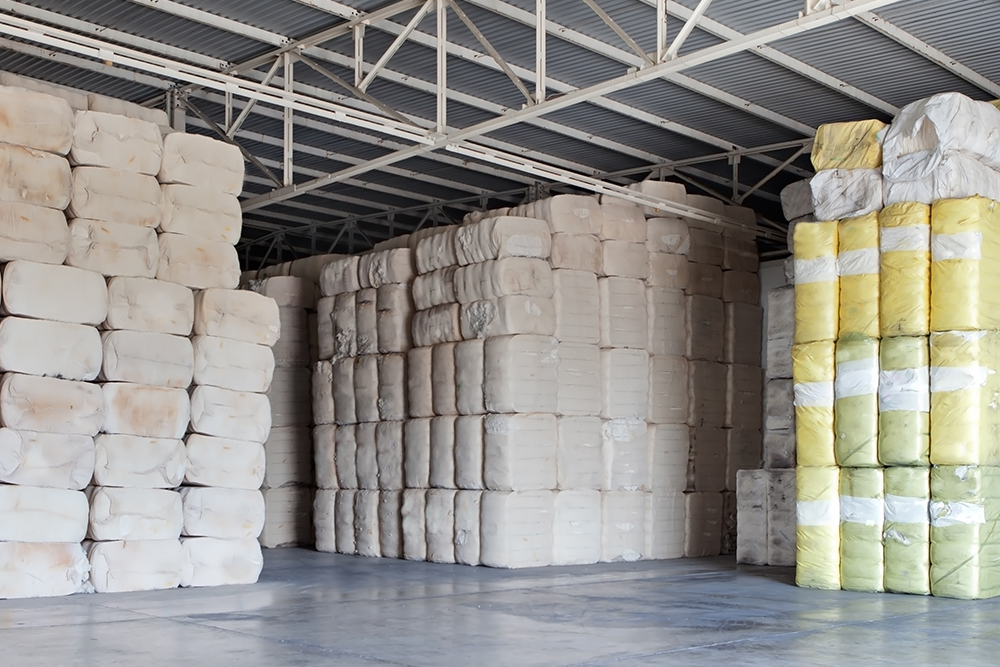The cotton scene in Pakistan has not changed much as far as its availability is concerned. As of Jan 1, 2023, total arrival declined to 4.61 million bales compared to 7.347 million bales in the same period last year. The price though has inched up. This depicts a decline of 2.73 million bales over the crop harvested last year. The 37.2 percent decline has hit the domestic textile industry badly. Pakistan operates primarily a cotton-based textile industry. It has gradually lost the advantage of fulfilling its cotton requirements from local production.
The decline in cotton arrival is attributed to the flash floods in Pakistan, which devastated large swathes of agricultural land in the country, especially in Sindh and Balochistan. As of January 1, cotton arrival in Sindh was 1.85 million bales compared to 3.509 million bales in the same period in 2021, a decrease of 1.659 million bales or 47 percent. On a monthly basis, cotton arrival recorded an improvement of 5 percent as compared to 1.765 million bales arrived on December 1. Similarly, cotton arrival in Punjab clocked in at 2.760 million bales as compared to 3.839 million bales reported in the same period last year, which is a decline of 28 percent. However, on a monthly basis, cotton arrival recorded an increase of 10 percent as compared to 2.515 million bales arrived on December 1.
The country only a decade ago consumed 16 million cotton bales annually. The imports were nominal and that too of long-staple cotton. The consumption has now been reduced to 14 million bales. The country has booked around 5 million bales from different countries. That means the availability of only 9.61 million bales has been assured. With textile mills operating at 50 percent or even less capacity, it is unlikely that the consumption next year would even be 14 million bales. Reports of the closure of numerous textile mills were circulating in the market but most of those mills were relatively small. From December onwards some big mills listed on the Pakistan Stock exchange have also announced the closure of some of their capacities.
 On Jan 02 Crescent Fibres Limited, engaged in the manufacture and sale of yarn, conveyed to the Pakistan Stock Exchange (PSX) that the company has decided to curtail production by up to 50 percent on a temporary basis. In the last week of December Suraj Cotton Mills Limited (SURC), a textile manufacturer, announced it will curtail its production by 40 percent. Earlier, textile giant Nishat Chunian Limited (NCL) announced that it will partially shut down its spindles from January 01, citing market conditions.
On Jan 02 Crescent Fibres Limited, engaged in the manufacture and sale of yarn, conveyed to the Pakistan Stock Exchange (PSX) that the company has decided to curtail production by up to 50 percent on a temporary basis. In the last week of December Suraj Cotton Mills Limited (SURC), a textile manufacturer, announced it will curtail its production by 40 percent. Earlier, textile giant Nishat Chunian Limited (NCL) announced that it will partially shut down its spindles from January 01, citing market conditions.
According to a weekly cotton market review by the United States Department of Agriculture, spot cotton trading in the US market was slow. Demand was moderate. Supplies and producer offerings were moderate. Average local spot prices were lower for the week ending December 29 and higher for the week ending January 5. Trading of CCC-loan equities was inactive. No domestic mill inquiries or sales were reported. Some mills attempted to cancel or delay deliveries of raw cotton and reduced operating schedules due to lackluster yarn demand. Mill buyers maintained a cautious undertone. Mills continued to produce personal protective equipment for frontline workers and consumers. Demand through export channels was light to moderate. Agents throughout the Far East inquired about any discounted styles of cotton.
In Pakistan, cotton prices have started increasing. At the start of January, the spot rates varied between Rs.1700-1750 per maund but the rates have since then increased though trading remained modest. On January 12 the rate of cotton in Sindh was quoted between Rs.18000 to Rs.20500 per maund. Cotton rates in Punjab were slightly higher varying between Rs.18000 to Rs.21000 per maund. The cotton from Balochistan fetched Rs.20500 per maund.
![]() The All Pakistan Textile Mills Association (APTMA), sent an SOS to the Federal Minister for Finance and Revenue Ishaq Dar asking him for direct intervention as the banks are not opening Letters of Credit (LCs) for the import of cotton. The letter dated January 12, pointed out that cotton is an essential raw material for the textile sector. The letter reminded the Finance Minister that Pakistan harvested a poor cotton crop of fewer than 5 million bales which is significantly lower than the total requirement of 15 million bales that local spinners annually consume.
The All Pakistan Textile Mills Association (APTMA), sent an SOS to the Federal Minister for Finance and Revenue Ishaq Dar asking him for direct intervention as the banks are not opening Letters of Credit (LCs) for the import of cotton. The letter dated January 12, pointed out that cotton is an essential raw material for the textile sector. The letter reminded the Finance Minister that Pakistan harvested a poor cotton crop of fewer than 5 million bales which is significantly lower than the total requirement of 15 million bales that local spinners annually consume.
The letter communicated to the minister that there is a shortage of 10 million cotton bales that must be imported in order to retain exports at the same level as last year of $19.3 billion. The letter deplored that the import of cotton has been severely restricted due to the reluctance of the banks to open letter of credit for cotton import.




